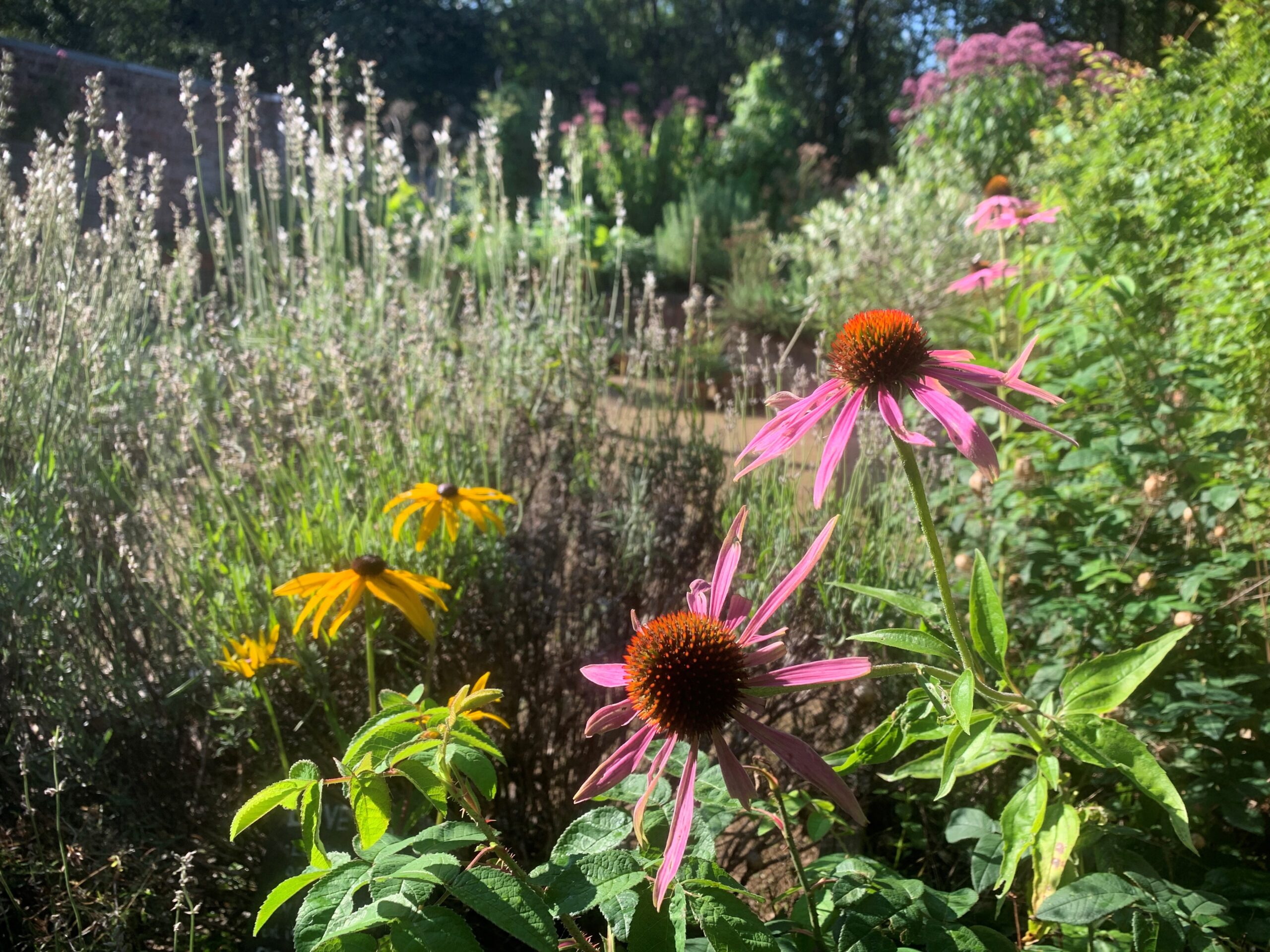With the arrival of September summer is drawing to a close, the nights are cooler and the days shorter, but there will still be warmth on a sunny day, and the seasonal harvests and colours of autumn tinge the foliage around us. We are enjoying the late flowering annuals; cosmos, calendula, snapdragons, which will keep going as long as we continue deadheading until the first frosts. Our fruit trees are laden with apples and pears, and nuts and berries provide a feast for the birds and squirrels.
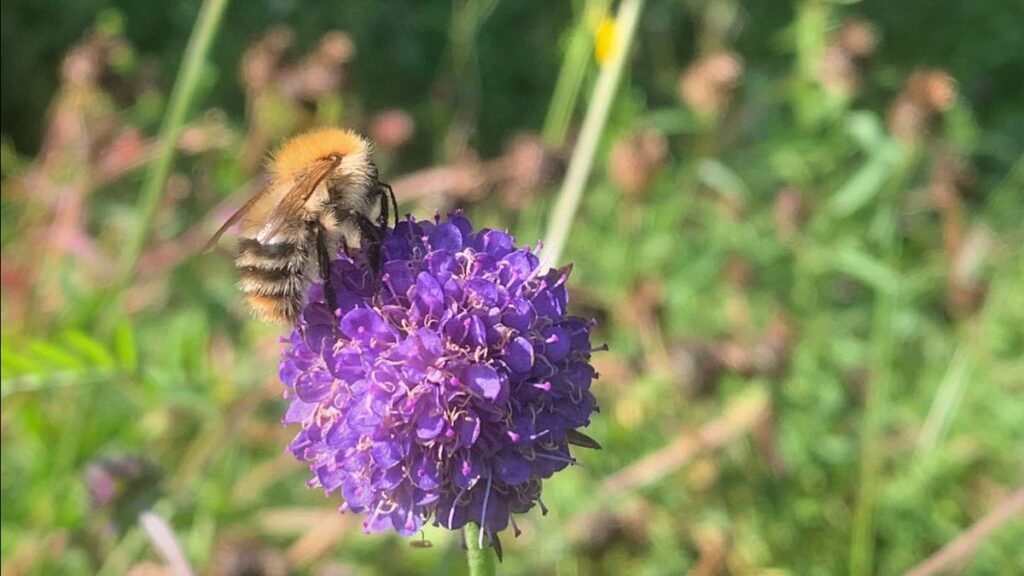
Our Lawn is Getting a Close Trim
Its now time to cut back all our lawn, including the sections left unmown throughout the year, and remove all clipping to the compost heap. We will begin to aerate, rake and brush in a top dressing of sand to keep our lawn healthy and help it withstand picnics, tai chi and events throughout the year.
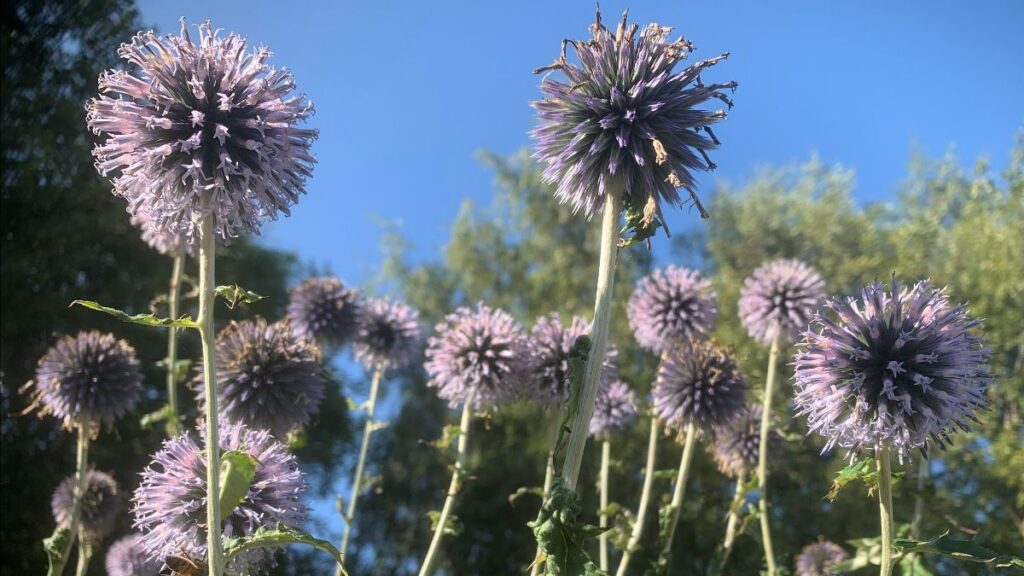
Planning our Spring Garden
And it always pays to be continually planning ahead. It’s time to think about next Spring! Bulbs are in the shops and available online so don’t leave it too late to get the best choices. If you’re not sure where the gaps are in your Spring garden then plant up some pots that can be placed in spaces next year. You may need to protect from scavenging squirrels by covering with chicken wire or jaggy prunings such as holly.
Deadheading
At this time of year, it is tempting to think it’s time to ‘tidy’ the garden; cutting back plants that have finished flowering, clearing borders and removing fallen leaves. However, it is worth taking a moment to think about what is happening in the garden and how important it is to allow nature to head towards autumn and winter in its own time. This will be appreciated by the wildlife living in the garden as well as benefiting the soil and the environment. The colours, textures and shapes of developing seedheads and autumnal leaves adds a whole new dimension to the garden landscape. And by leaving seedheads to mature we can collect seed for next year. Also leaving vital food sources for birds and shelter for mini beast. All you have to do is collect your seed heads on a dry day, its very important to make sure they are dry! Pop them into a paper bag, the seeds will fall out and can be separated from the pods or seed casings and stored in a paper bag or envelope until next Spring.
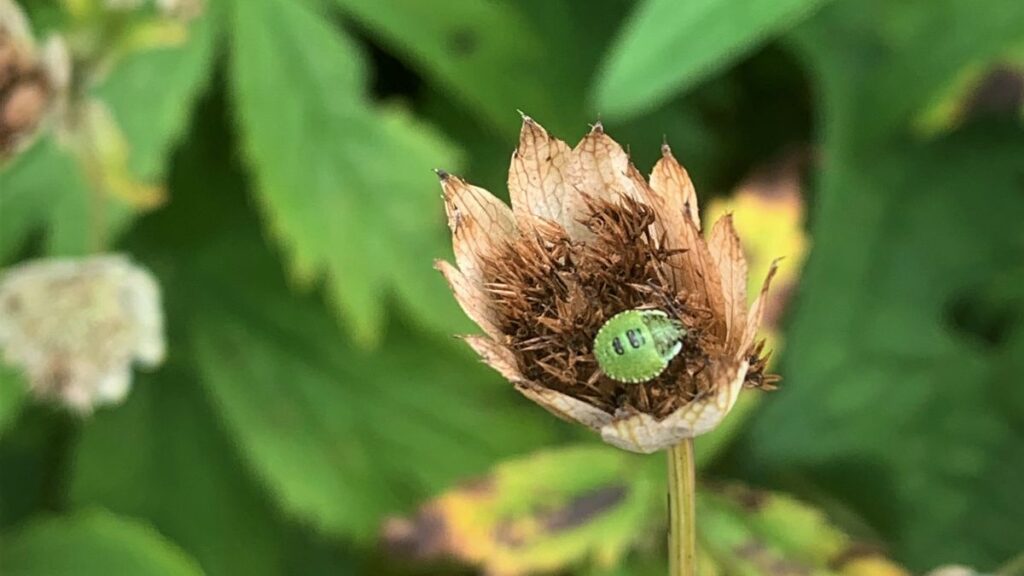
Amazing Mini-beasties
We have carried out two moth surveys in the past month. Earlier in August Richard Weddle identified a new record for the Gardens – the Iron Prominent. The larvae of this moth feed on birch and sometime oak and hazel, all of which grow here.
Richard has also been busy identifying insects from previous visits and has recorded an unusual metallic green weevil Polydrusus formosus. This is a first for The Hidden Gardens and there are only a handful of other Glasgow records, all from the last 3 years.
Our experience of this group of beetles tends to be their potential destruction of plant roots, or spoiling bags of flour and grains. However only a tiny minority of weevils cause destruction while the majority contribute to functioning ecosystems. One way they do this is by pollinating a range of plants.
If you are interested in reading more about this fascinating aspect of weevils lifecycle, here’s a good read.
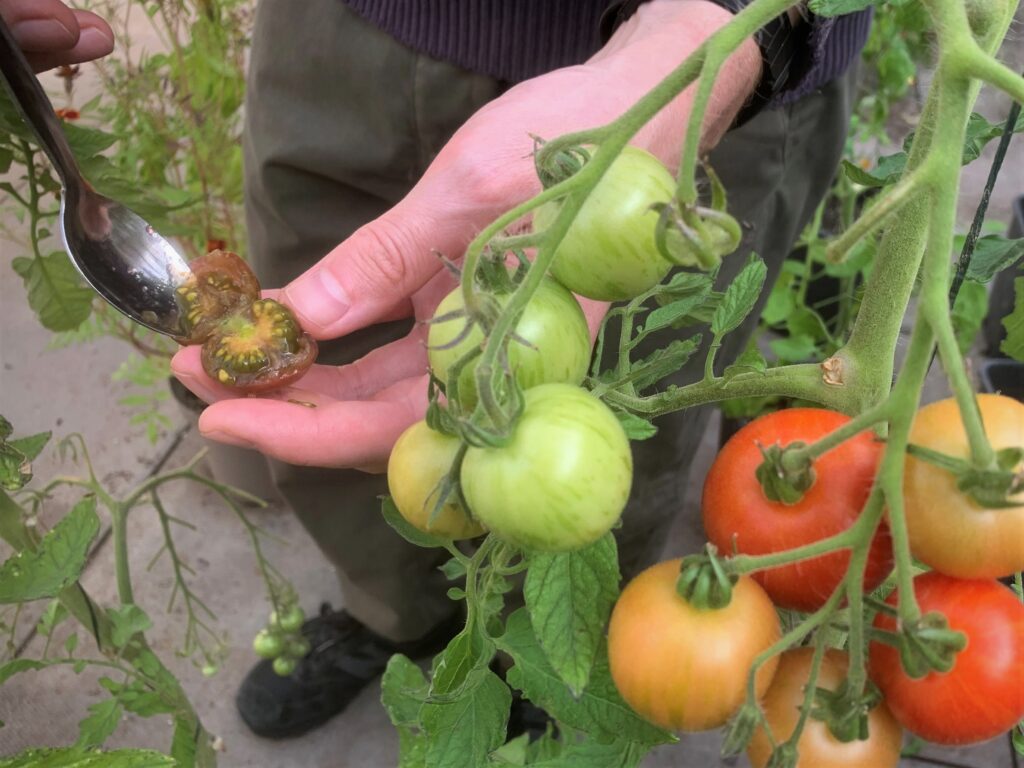
Collecting the Seeds from our Tomatoes
We have been enjoying the varieties of tomatoes we have grown this year so now is a good time to think about collecting seeds for next year – saves a bit of money and it means you can save seeds from the plants you know grew well in your own conditions.
To save tomato seeds first pick ripe fruit, free from any diseases, and not from F1 varieties which won’t necessarily grow with same characteristics again (it will say on the seed packet
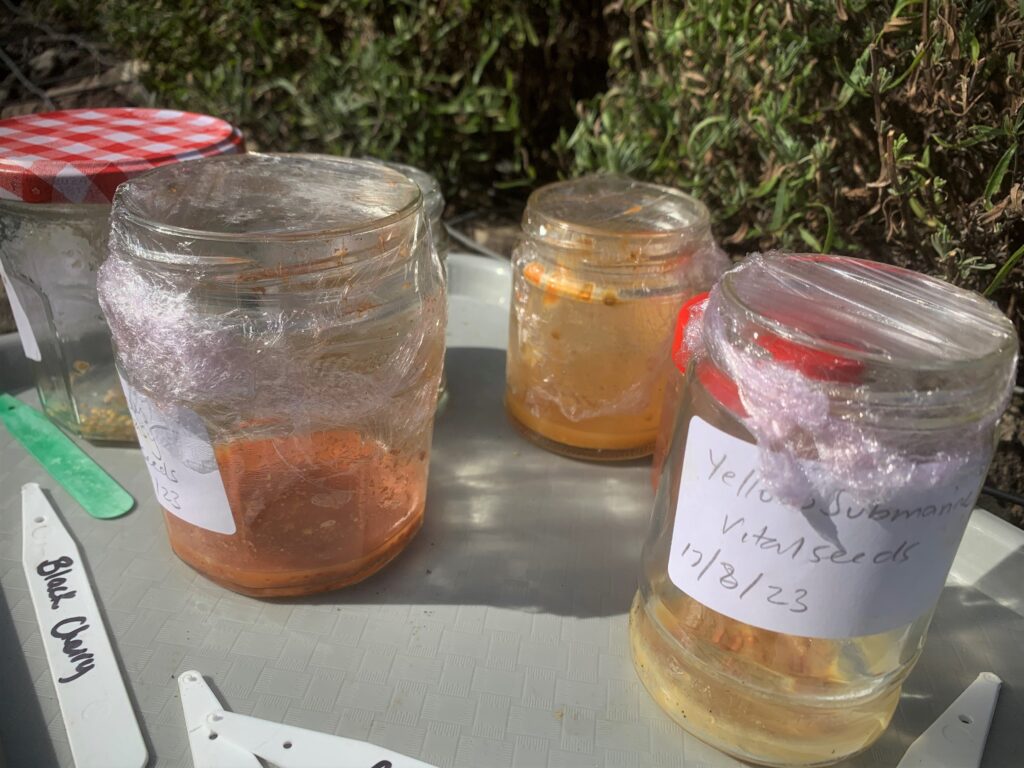
Scoop out the seeds along with the flesh and put into a container with a lid and leave for a few days, stirring twice a day. It will become mouldy and smelly which is what we want, this breaks down the gelatinous substances surrounding the seeds which contain inhibitors to germination.
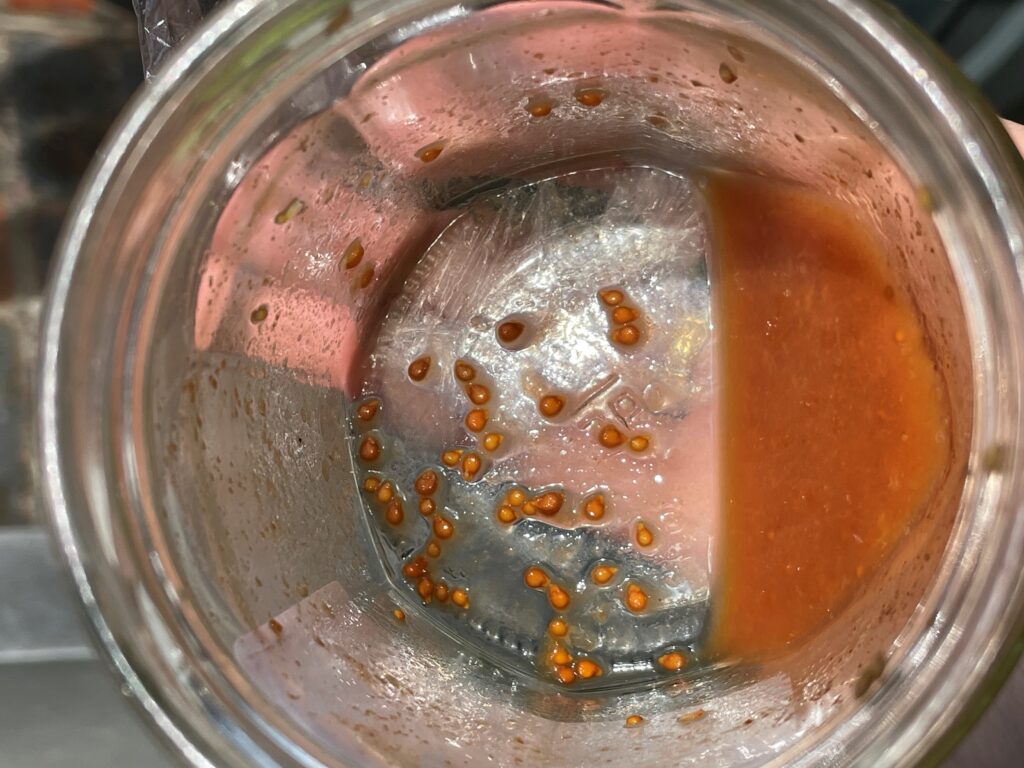
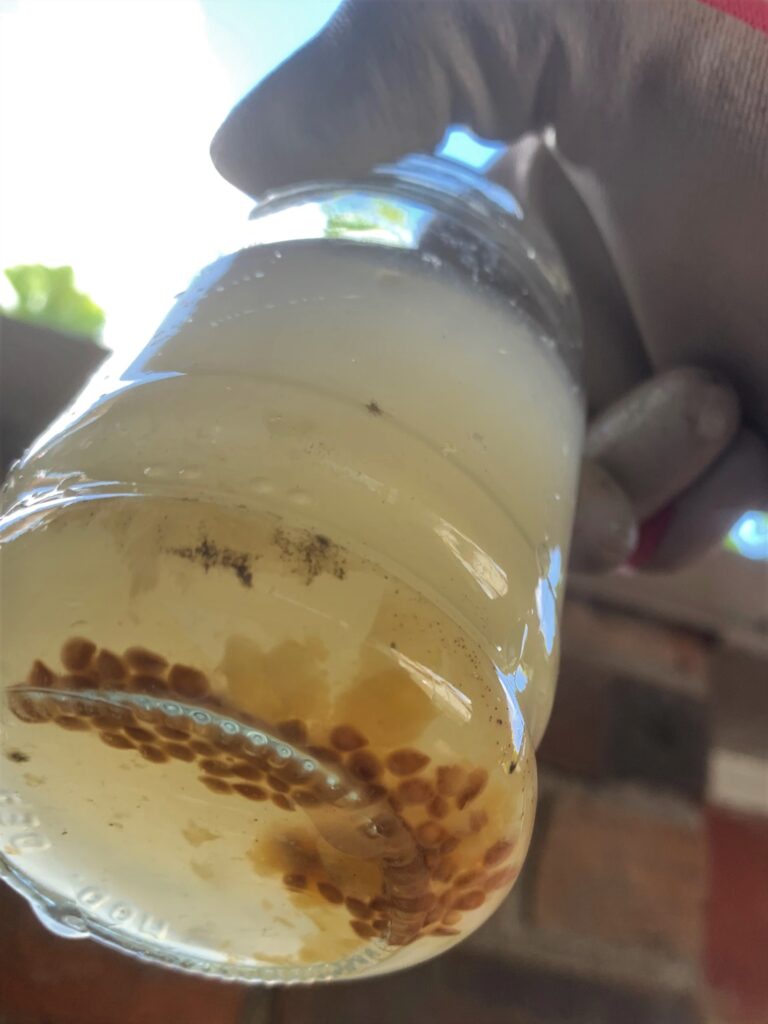
After a few days fill the container with clean water and swirl, the healthy seeds should fall to the bottom, and the mouldy material can be poured away, repeat several times until you are left with clean seeds in the bottom of your jar.
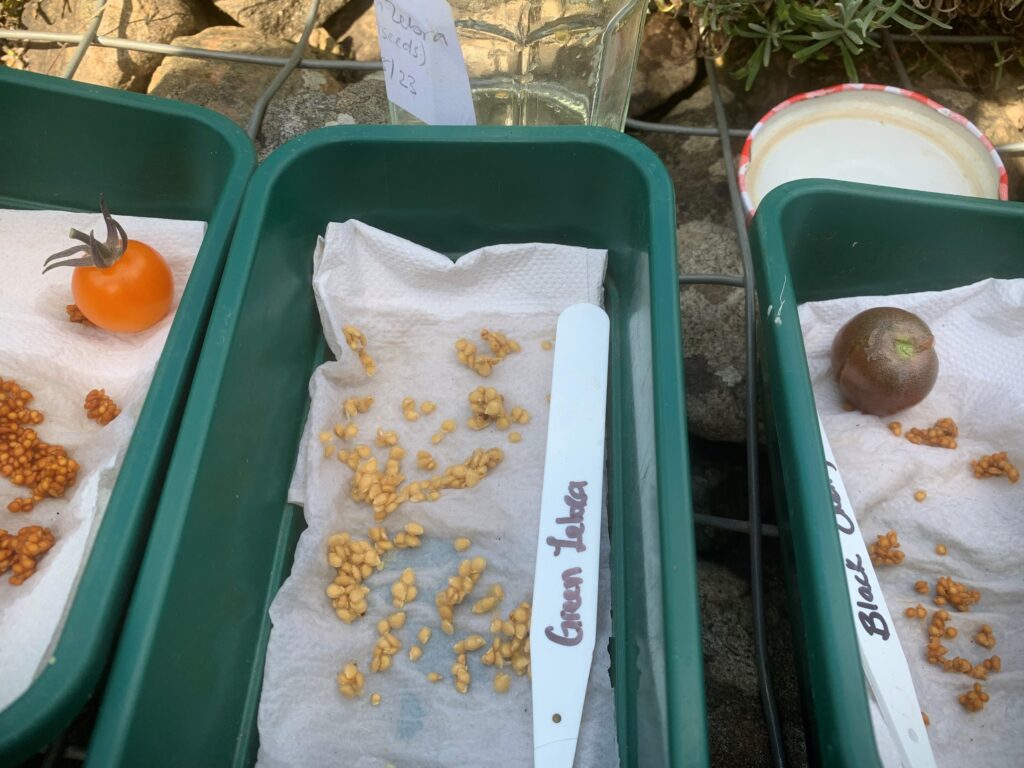
Tip these out onto kitchen paper to dry then store them in an envelope in a cool dry place, ready for sowing next year. Remember to label with the variety and the date.

